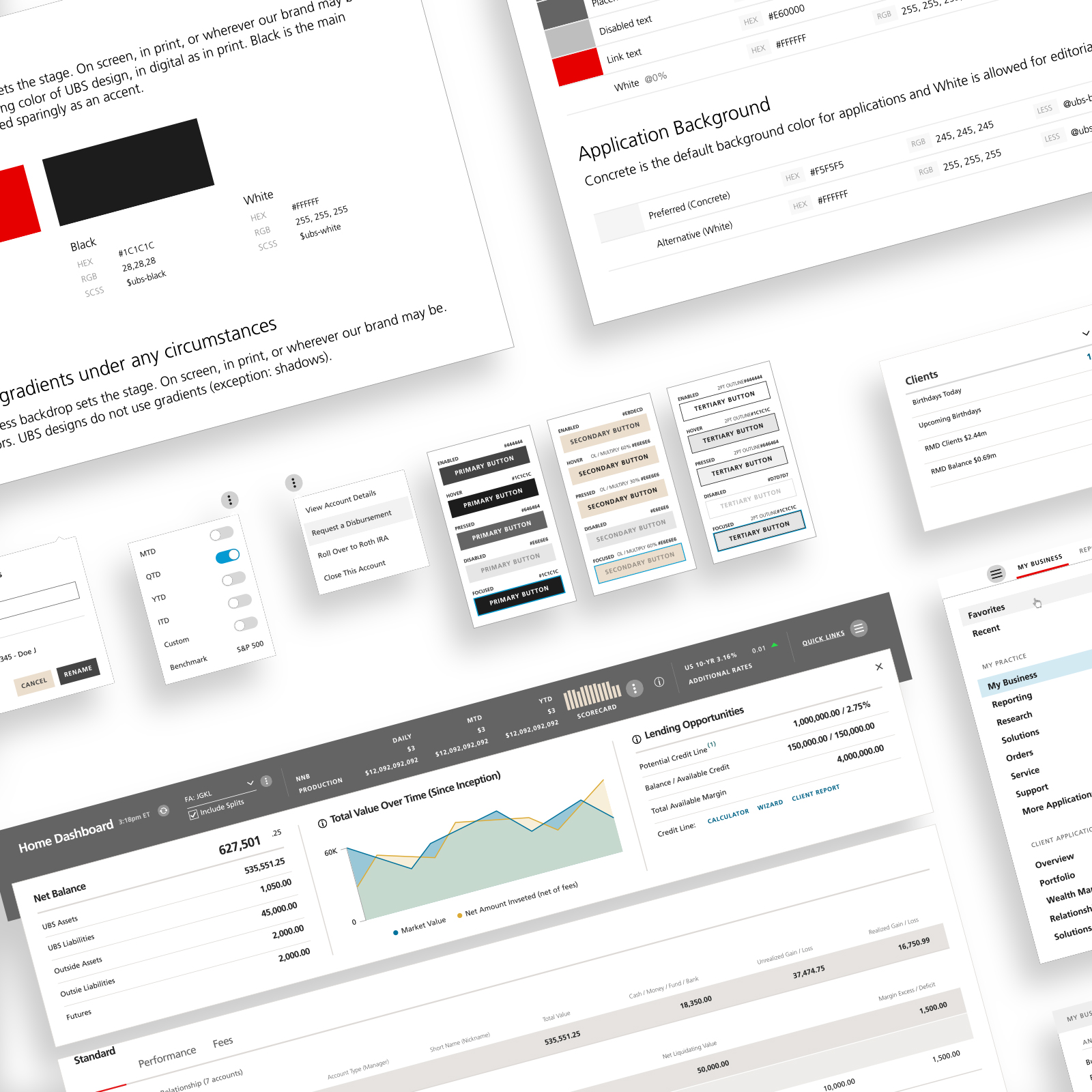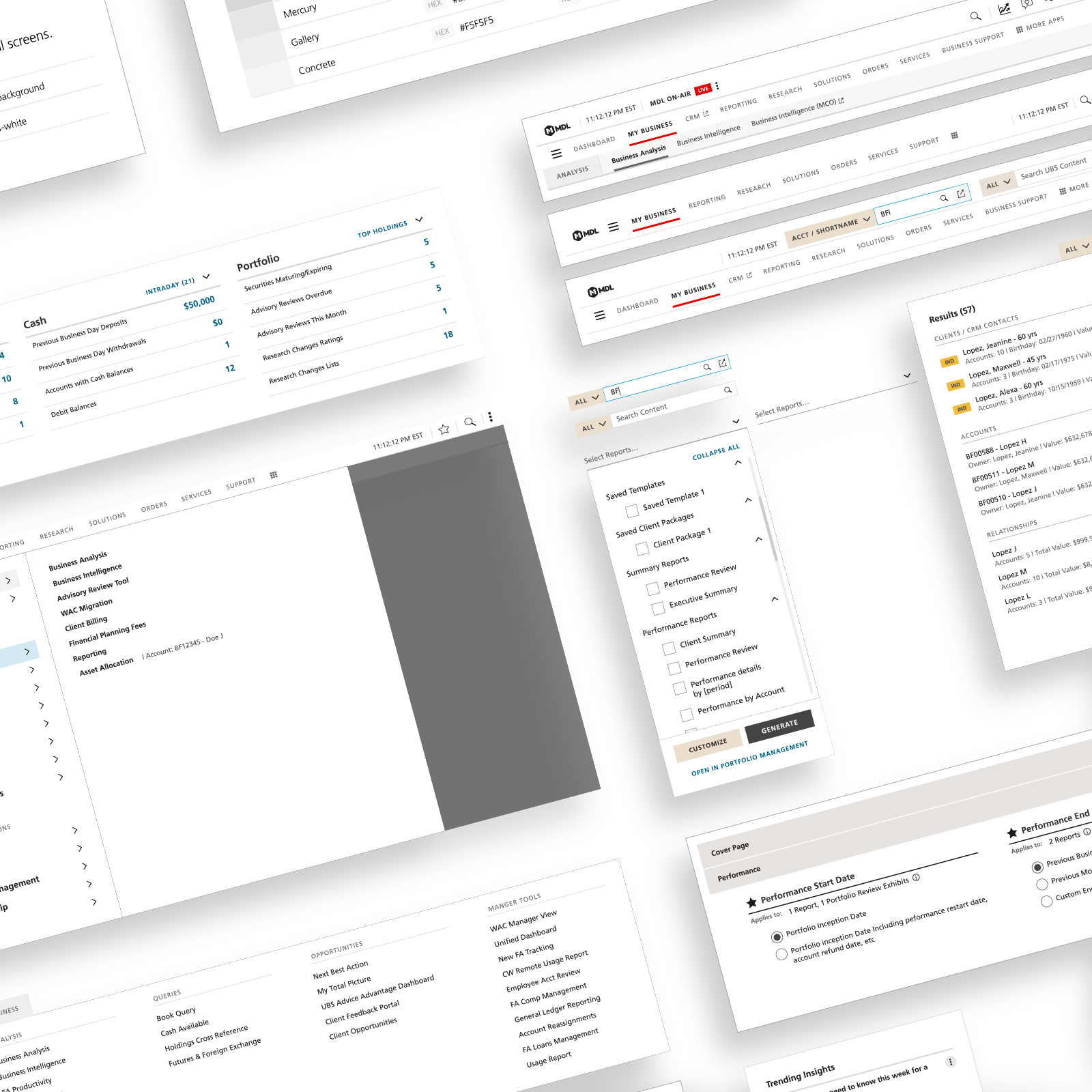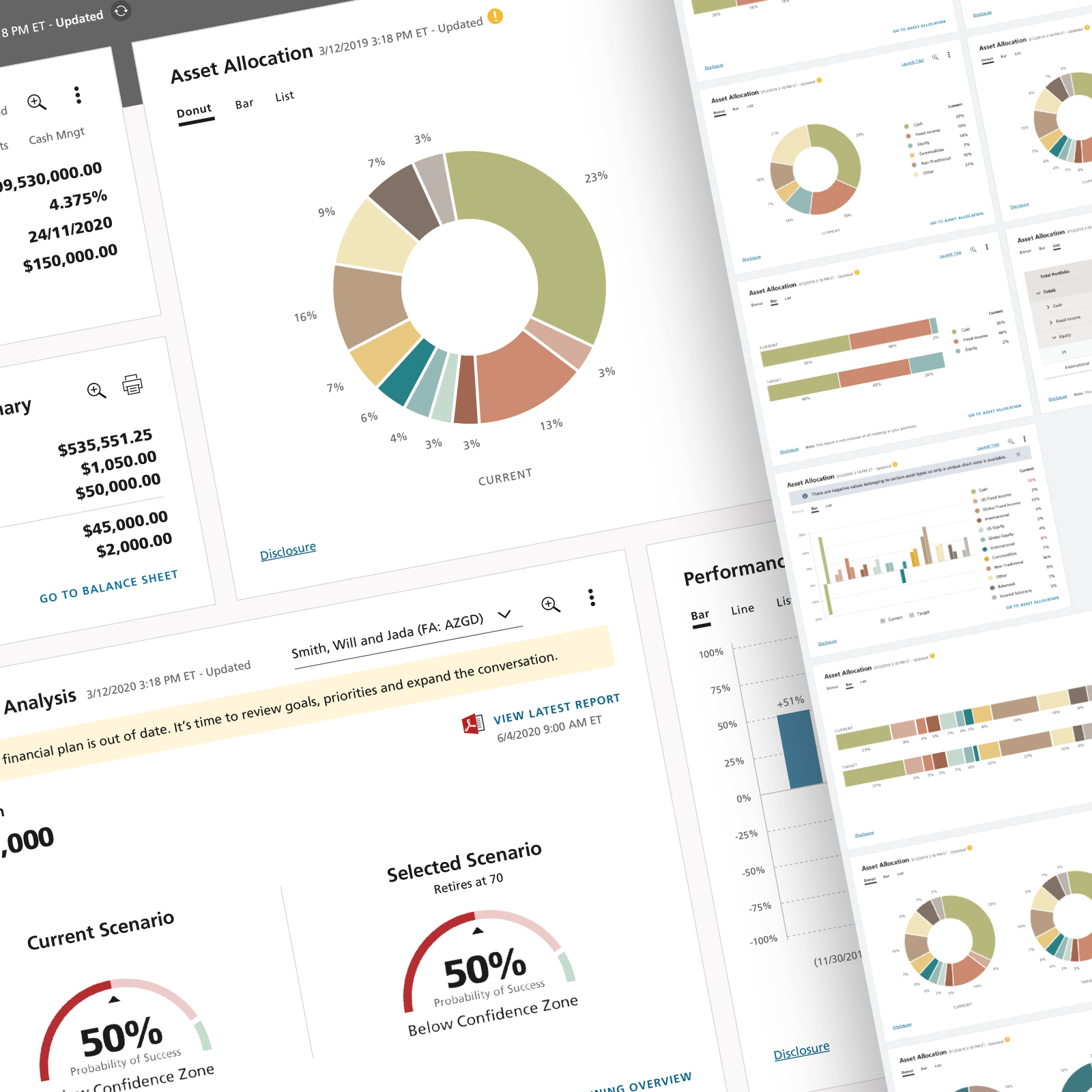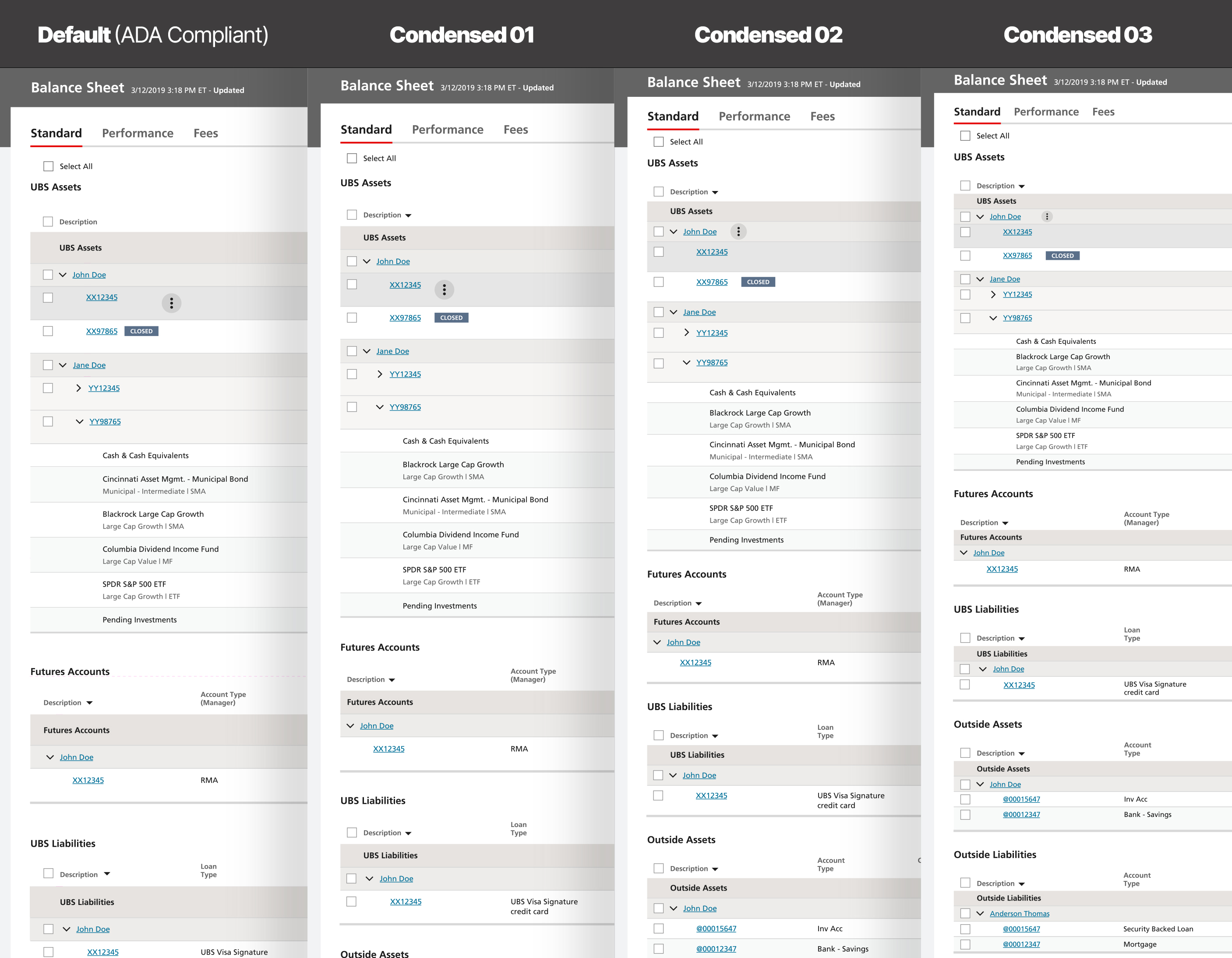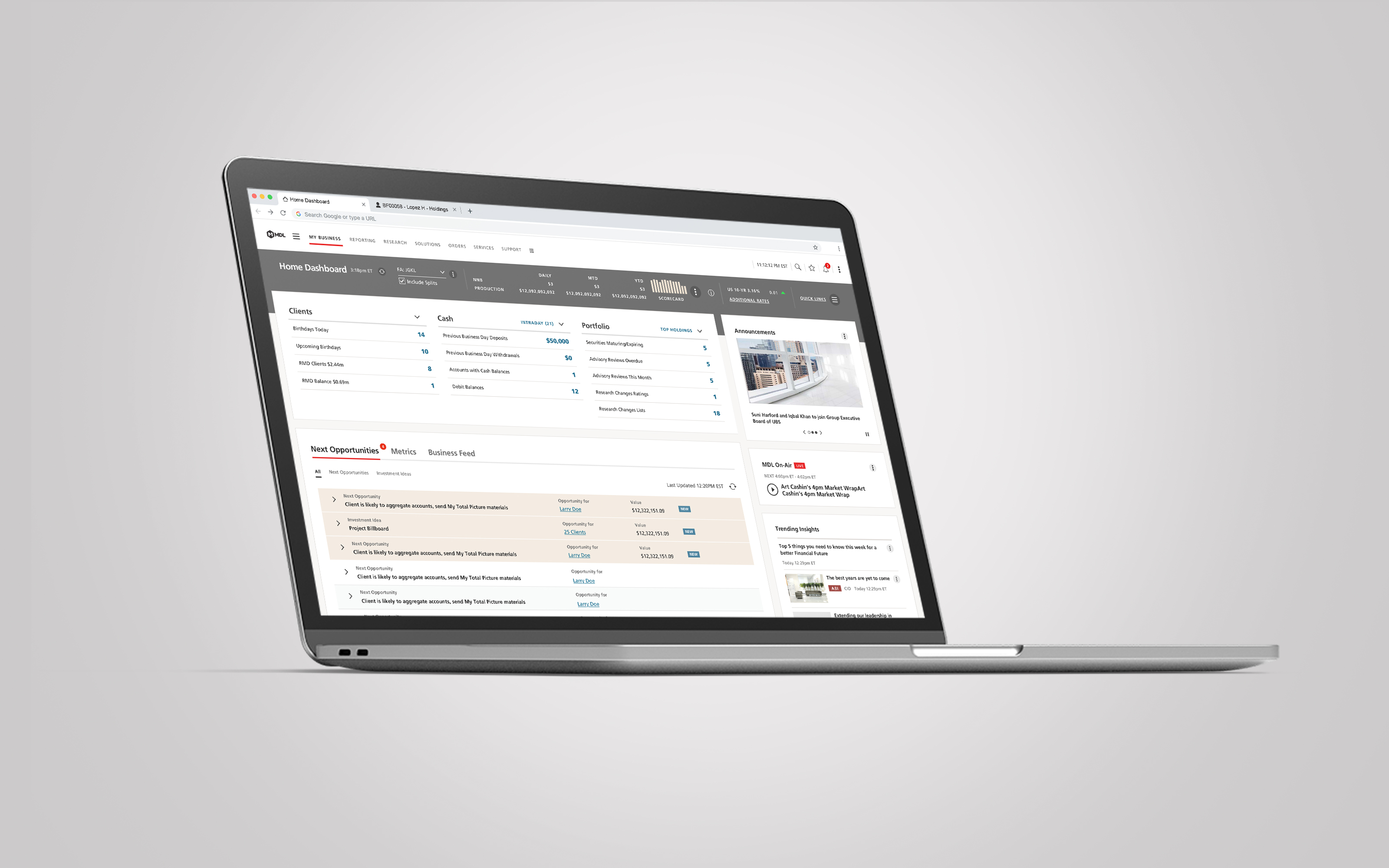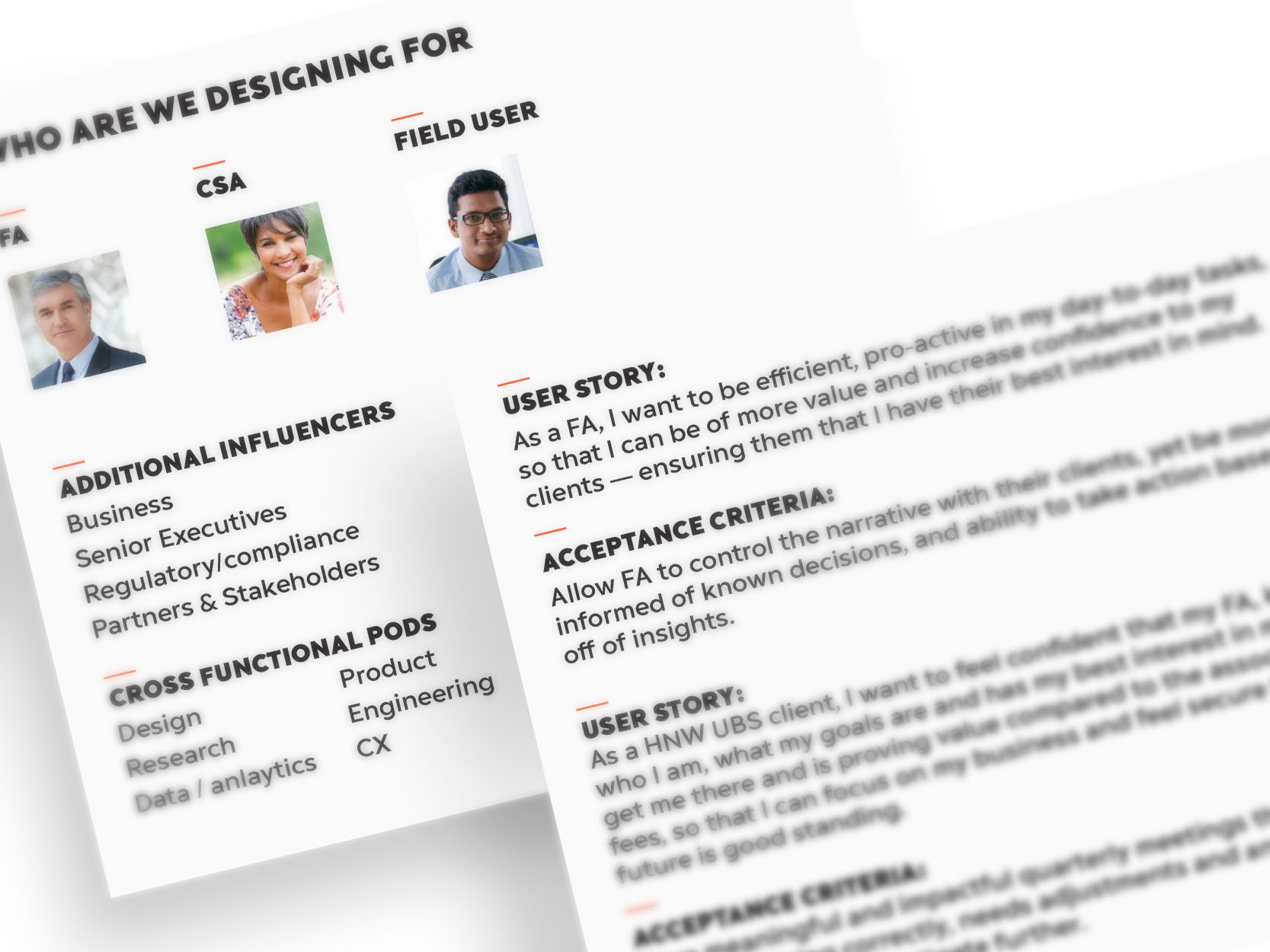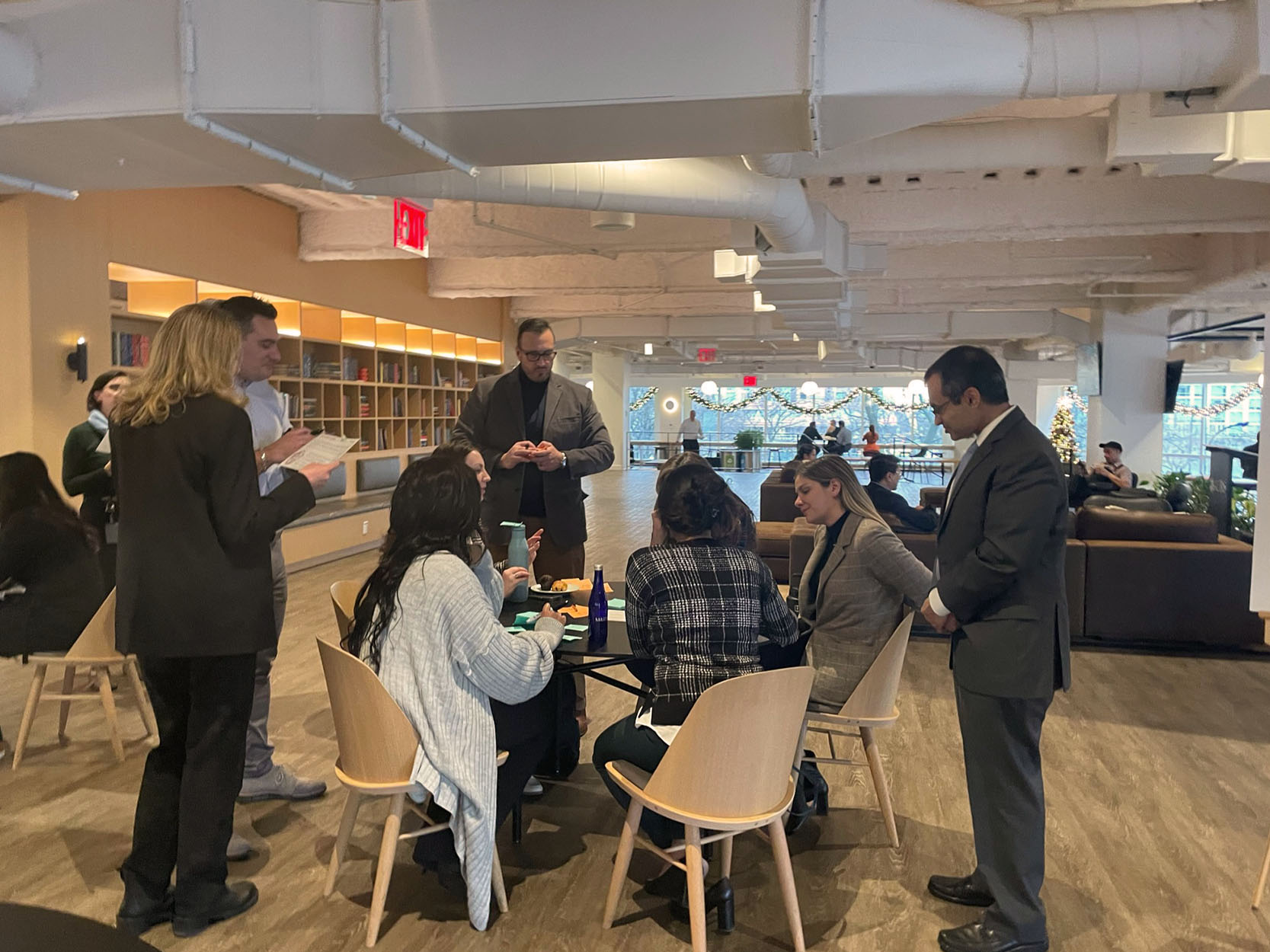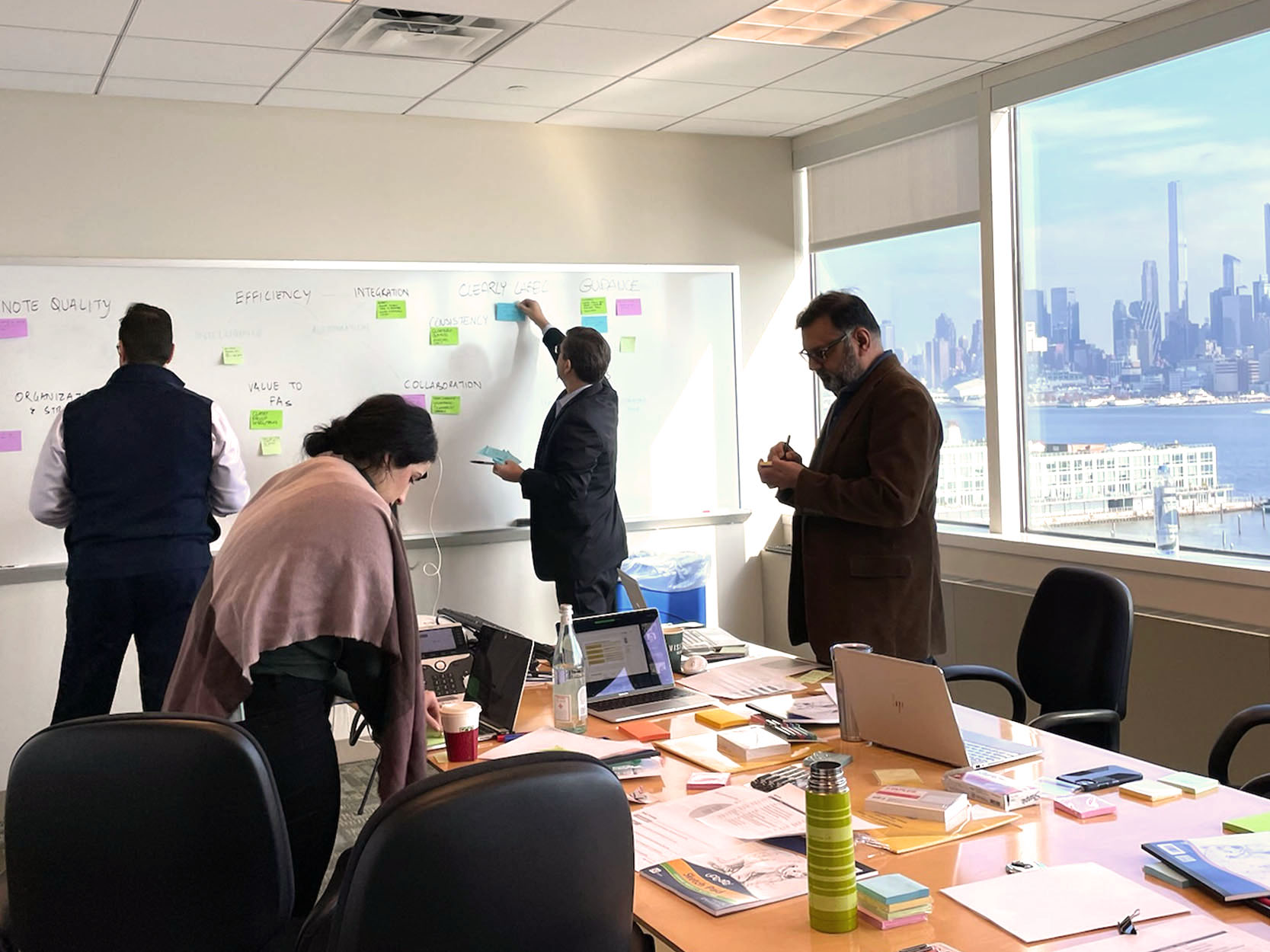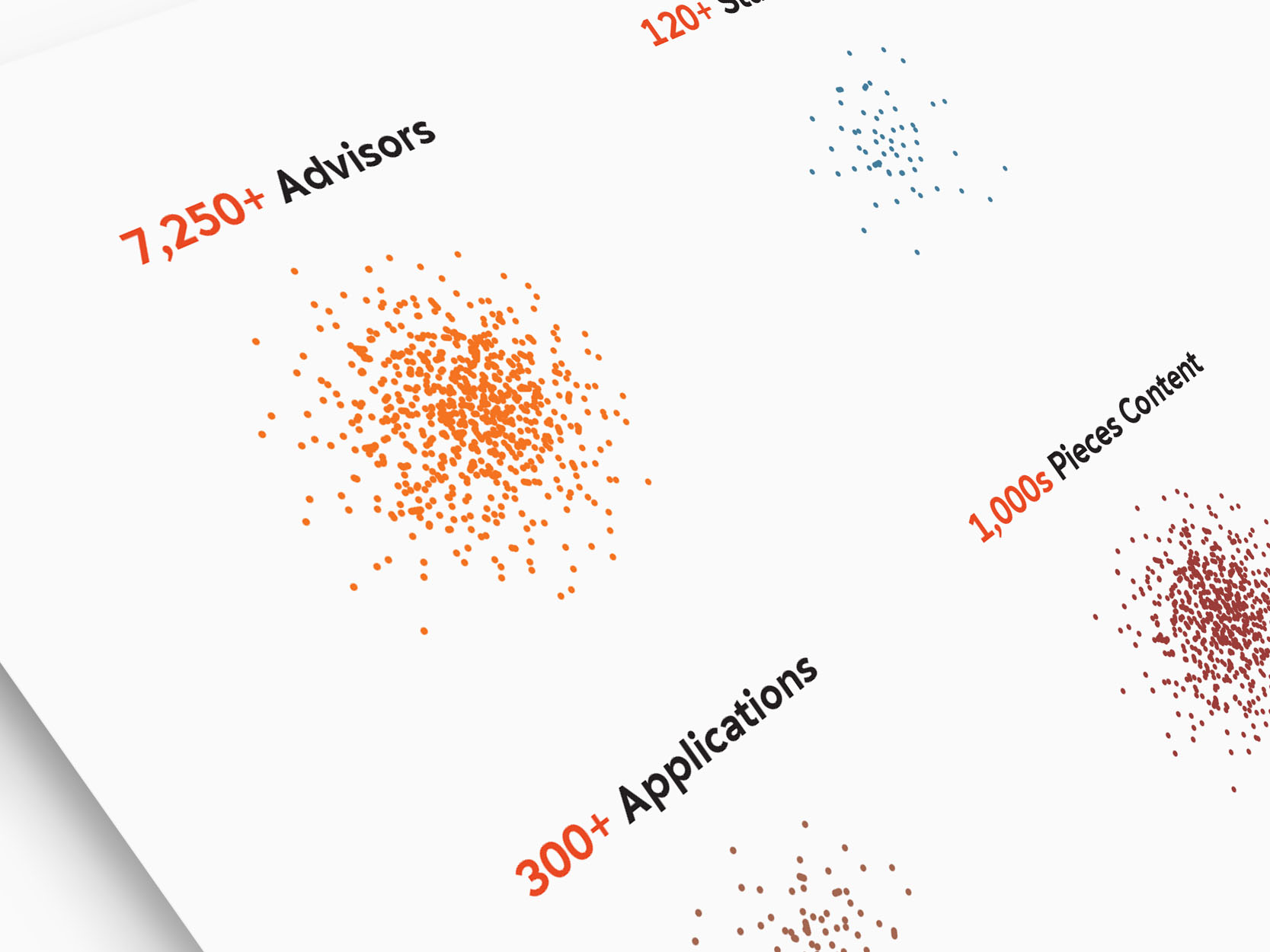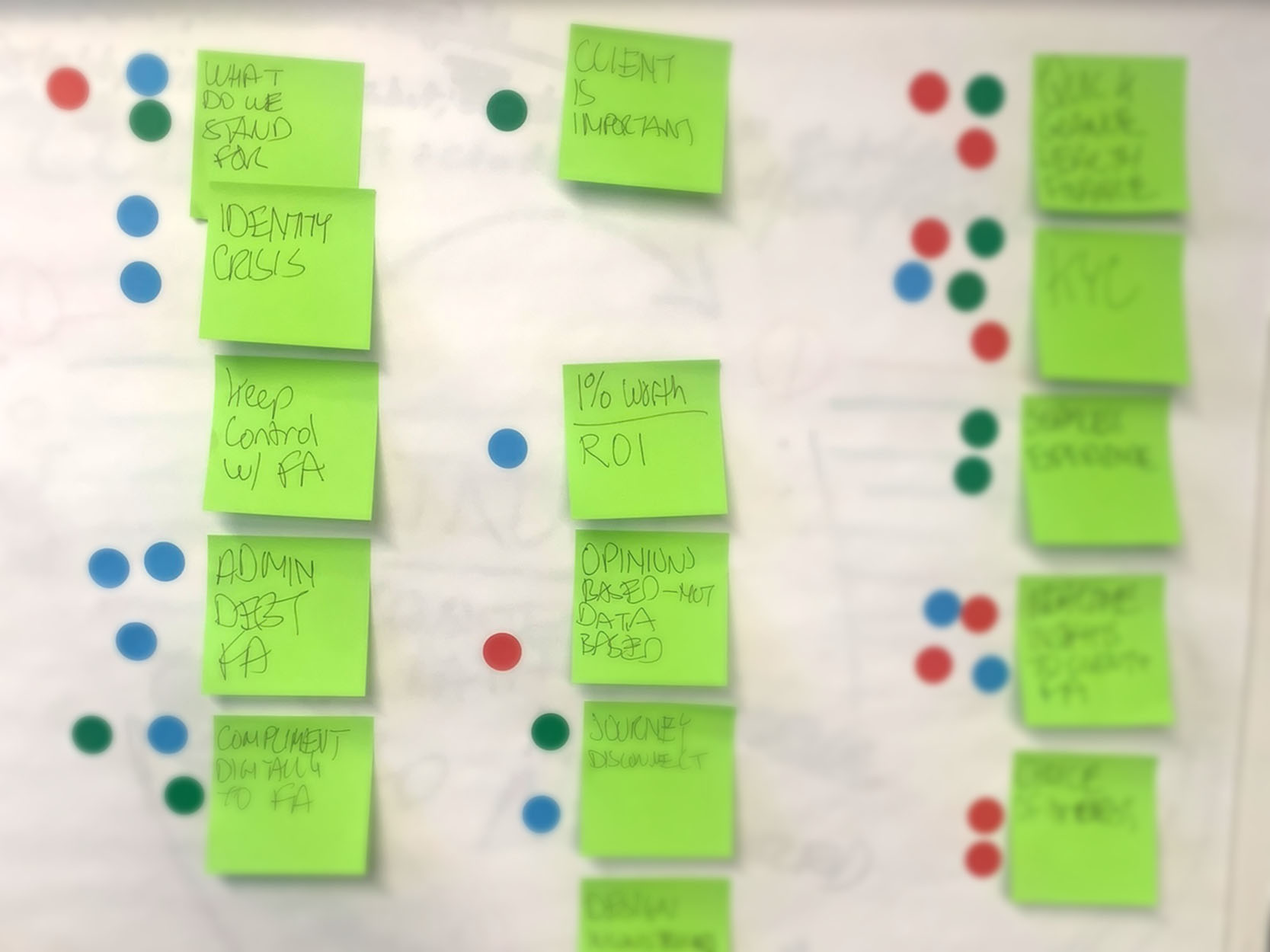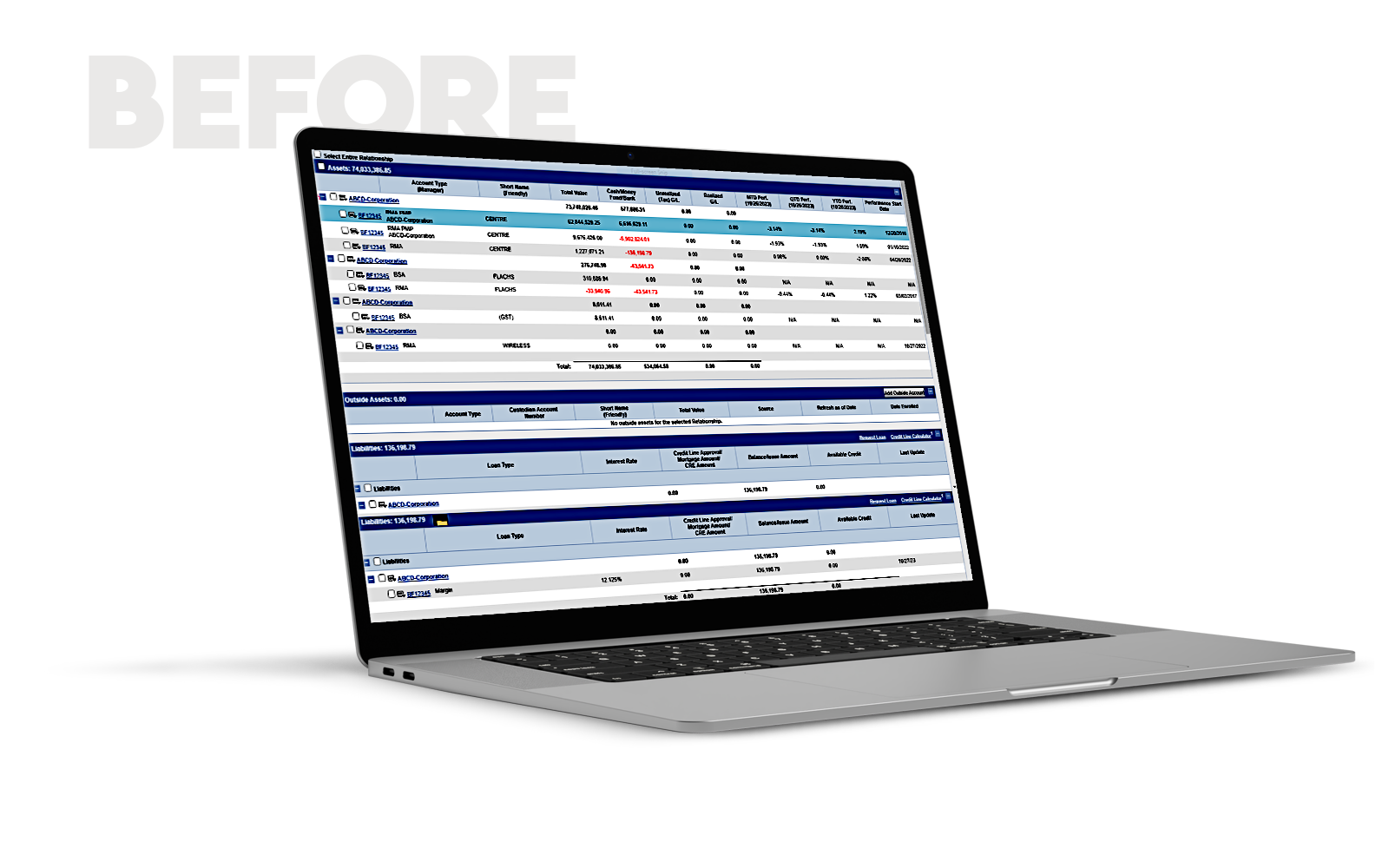
Background brief
Over 7,250 financial professionals confront daily challenges with a mandatory, outdated system, eroding their trust in the company and compromising their credibility with ultra-high net worth clients. This struggle, due to inefficient workarounds and frequent errors, demands an immediate, transformative solution to restore confidence and ensure effective client service.
Research objectives
Assess HNWC expectations for FA, focusing on trust and service.
Explore solutions to improve the platform, enhancing efficiency and satisfaction.
Evaluate the system's need for workarounds and their efficiency impact.
Study the relationship between usability and client trust among financial pros.
Key findings
Summarization of the top three findings from research and analytics
Research shows HNWC trust in FAs hinges on service quality and transparency, directly affecting client loyalty. The need to meet diverse user needs further stresses the importance of adaptable services.
Substantial use of workarounds in the current system leads to inefficiency and dissatisfaction, hindering growth and scalability. Catering to a wide user demographic amplifies these challenges.
Advanced, user-friendly platforms correlate with higher client trust and satisfaction, indicating technology is crucial for maintaining relationships. The diversity of user needs underlines the demand for flexible technological solutions.
Problem(s)
Diverse User Needs and Trust: The challenge lies in developing financial advisory services that not only prioritize transparency and personalized attention but also efficiently adapt to the varied ADA requirements and capabilities of a broad client demographic to maintain and enhance trust.
System Workarounds and Efficiency: The current system's heavy reliance on workarounds creates significant operational inefficiencies and client dissatisfaction, posing a problem in scaling financial practices. Addressing the diverse needs of a wide user base further complicates the implementation of streamlined processes.
Technological Adaptation for Client Relationships: The need for investment in advanced, user-friendly technological platforms is critical to fostering client trust and satisfaction. However, the challenge emerges in creating versatile and inclusive technological solutions that cater to the diverse and evolving needs of both financial professionals and their clients.
Hypothesis
Integrating customizations and meeting accessibility standards in service models and processes, tailored for professionals of all ages, is expected to boost trust and loyalty between High Net Worth Clients (HNWC) and Financial Advisors (FAs). By adopting advanced, accessible technology, this strategy aims to enhance efficiency, client satisfaction, and practice growth. Addressing diverse client needs and operational challenges, it seeks to forge stronger client relationships and improve service delivery, ensuring a competitive edge in financial advisory services.
Design thinking
In multiple Design Thinking workshops, we brought together financial professionals, UX/UI designers, IT specialists, and strategists to solve key issues. Although (HNWC) had limited direct involvement, their (FAs) effectively conveyed their needs. Through endless cycles of Iterate, Test, Build, we developed solutions for adaptable services and efficient systems, enhancing client relationships.
The workshops led to a strong consensus on innovative ideas, with FAs bridging the gap for HNWC, ensuring a collaborative path toward execution and transformative user experiences.
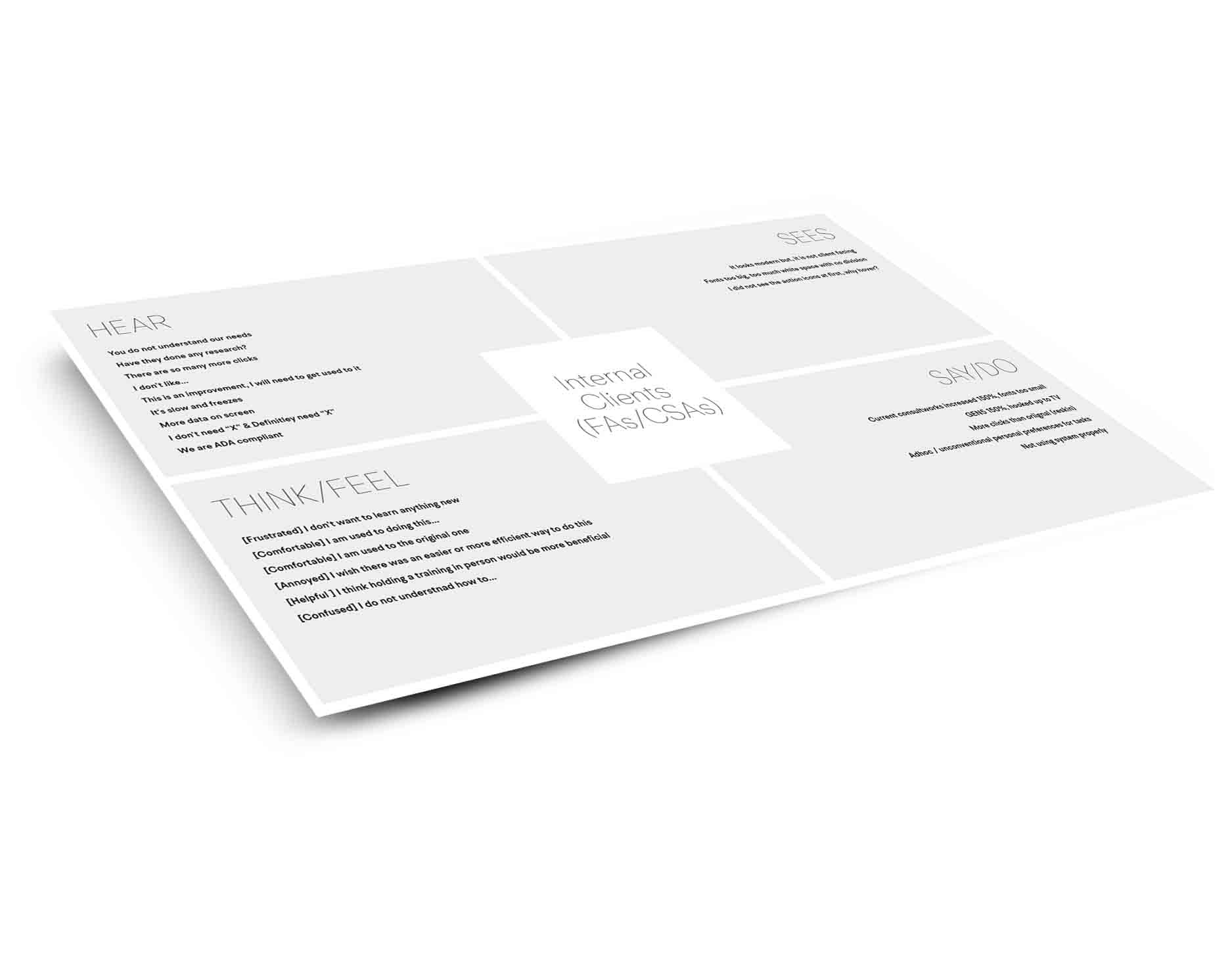
Key features
- Customizable set of features per entitlements
- 80% default settings, 20% personalized set of features
- Real-time collaboration tools
- Integrated regulatory compliance checks
- Automated workflow optimizations
- Personalized client communication templates
- Advanced analytics and reporting
- Secure document sharing and storage
- Responsive 1920-1280 accessibility
- Client feedback and satisfaction tracking
- AI-driven insights for client management
Design principles
User-Centric Design and Trust: Focus on understanding and meeting the needs of both financial professionals and their clients to foster trust. Develop solutions that not only enhance user experiences but also build and maintain confidence in the system's reliability and security.
Simplicity and Clarity with Enhanced Guidance: Strive for clean, intuitive interfaces and straightforward processes, complemented by tooltips, information icons, and criticality-based notifications. These features aim to demystify functionality, provide helpful context, and alert users to important actions or information, ensuring ease of use for all technical proficiency levels.
Accessibility, Customization, and Personalization: Design solutions to be accessible and inclusive, catering to financial professionals with diverse needs and levels of accessibility. Incorporate customizable and personalized features that allow users to tailor their daily interactions with the applications to their specific preferences and requirements.
Solutions
What we did
Our approach emphasizes user-centric design, simplicity, and personalization, aiming to refine the digital interactions between financial professionals and their clients. By embedding intuitive navigation aids such as tooltips and criticality-based notifications, we simplify complex processes, thereby enhancing clarity and building user trust.
Additionally, our platform's adaptability through customizable features ensures it meets the diverse needs of all users, promoting accessibility and ease of use. This commitment to flexibility and user-friendly design not only elevates efficiency but also facilitates more effective practice management, demonstrating our dedication to delivering solutions that foster trust and respond to the evolving requirements of the financial sector.
Results
What went well
Daily productivity
Achieved 23-36% daily productivity surge for 7,250 financial professionals translating to annual business savings between $3 to $5 million.
User satisfaction
Internal user satisfaction surged from an average of 64% to 88%.
ADA Integration
Significantly mitigated the risk of potential lawsuits, thereby safeguarding against potential legal expenses.
What didn't go well
Too many features
We were overly ambitious with our initial MVP, incorporating too many features, which later required prioritization and phasing out.
Legacy Constraints
Feature downgrades were necessary to comply with legacy constraints, stifling creativity and lowering morale.
Scope challenges
Our project's ambitious scope led to inconsistencies and missed deadlines, underscoring the need for realistic scoping and cohesive design strategies across our platform's 300 applications.
